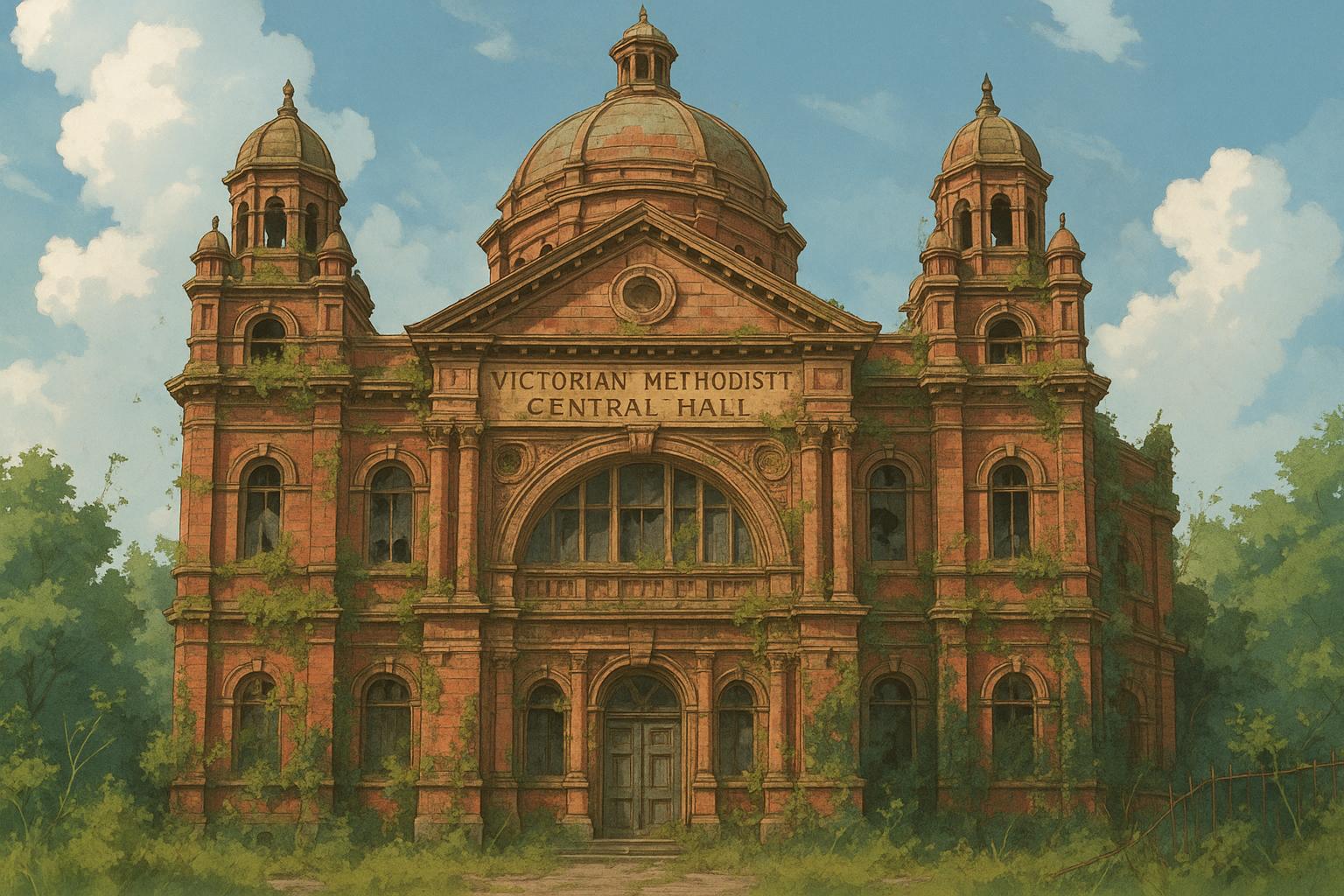The Methodist Central Hall, a significant cultural landmark in Birmingham, has been placed on the Victorian Society's annual list of endangered buildings, raising alarms over its future. Originally opened in 1903 as a Methodist place of worship, the building metamorphosed into the Que Club in 1989, a vibrant music venue showcasing iconic acts, including David Bowie and Blur. However, since its closure in 2017, concerns have mounted regarding its deteriorating condition, with the Victorian Society noting that it appears to have "slipped into decline."
This Grade II-listed structure, characterised by its striking red brick and terracotta façade, has become emblematic of the challenges facing historic buildings in Birmingham. Once a bustling hub of activity, the building has not only been vacant but has also been subject to neglect and vandalism in recent years. The Victorian Society has urged local authorities to act decisively, highlighting Birmingham City Council's lack of enforcement on preserving such heritage sites. The Society recommends that an Urgent Works Notice be issued to prevent further decay, reflecting a broader concern about the city’s historic architecture.
According to Historic England's Heritage At Risk Register, the Methodist Central Hall is one of 19 buildings in Birmingham identified as at risk due to disrepair. This designation underscores the building's significance as a heritage site, as well as the urgency of intervention to protect its future. Various plans for redevelopment have emerged, including proposals to transform the structure into a hotel-led leisure and business complex. Advocates for preservation argue that revitalising the Hall is crucial not only for its historical value but also for the enhancement of the local community.
Moreover, explorations by urban adventurers have revealed the haunting interior of the Methodist Central Hall, capturing its neglected state through photographs that tell the story of a once-thriving music venue now consigned to silence. The juxtaposition of its glorious past and current decline amplifies calls for action, as stakeholders advocate for its restoration to restore the vibrancy to Birmingham’s cultural landscape.
As the city grapples with the preservation of its architectural heritage, the fate of the Methodist Central Hall serves as a cautionary tale. It highlights the need for cohesive strategies to blend the preservation of history with modern-day urban development. Only through concerted efforts from both the community and local authorities can the legacy of such historic sites be safeguarded for future generations.
Reference Map
- Paragraphs 1, 2
- Paragraphs 1, 2
- Paragraph 2
- Paragraph 3
- Paragraph 4
- Paragraph 4
- Paragraph 5
Source: Noah Wire Services
